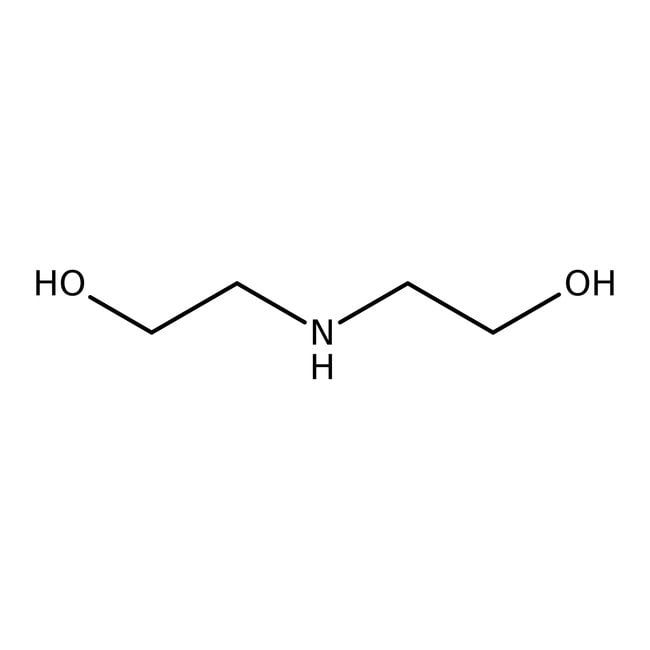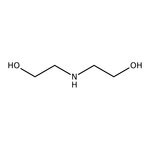Search Thermo Fisher Scientific
Diethanolamine, 99%, Thermo Scientific Chemicals



Diethanolamine, 99%, Thermo Scientific Chemicals
Chemical Identifiers
Specifications
Description
This Thermo Scientific Chemicals brand product was originally part of the Alfa Aesar product portfolio. Some documentation and label information may refer to the legacy brand. The original Alfa Aesar product / item code or SKU reference has not changed as a part of the brand transition to Thermo Scientific Chemicals.
Diethanolamine is used in the preparation of morpholine and diethanolamides, which is an active ingredient in cosmetics and shampoos. It acts as a surfactant and a corrosion inhibitor. It is utilized to remove hydrogen sulfide and carbon dioxide from natural gas. Further, it is an intermediate used in the rubber chemicals, as a humectant and a softening agent, and as an emulsifier and dispersing agent in agricultural chemicals. In addition to this, it is used in cutting oils, cleaners, soaps, polishers, and pharmaceuticals.
Solubility
Miscible with water.
Notes
Hygroscopic and air sensitive. Incompatible with strong oxidizing agents, strong acids, copper, zinc, carbon dioxide and iron.
Figures
Documents & Downloads
Certificates
Frequently asked questions (FAQs)
Citations & References
Safety and Handling
Classification of the substance or mixture
CLP classification - Regulation(EC) No 1272/2008
Label Elements
Signal Word
Danger
Hazard Statements
H302 - Harmful if swallowed
H315 - Causes skin irritation
H318 - Causes serious eye damage
H361fd - Suspected of damaging fertility. Suspected of damaging the unborn child
H373 - May cause damage to organs through prolonged or repeated exposure
Precautionary Statements
P280 - Wear protective gloves/protective clothing/eye protection/face protection
P301 + P330 + P331 - IF SWALLOWED: rinse mouth. Do NOT induce vomiting
P302 + P352 - IF ON SKIN: Wash with plenty of soap and water
P305 + P351 + P338 - IF IN EYES: Rinse cautiously with water for several minutes. Remove contact lenses, if present and easy to do. Continue rinsing
P310 - Immediately call a POISON CENTER or doctor/physician